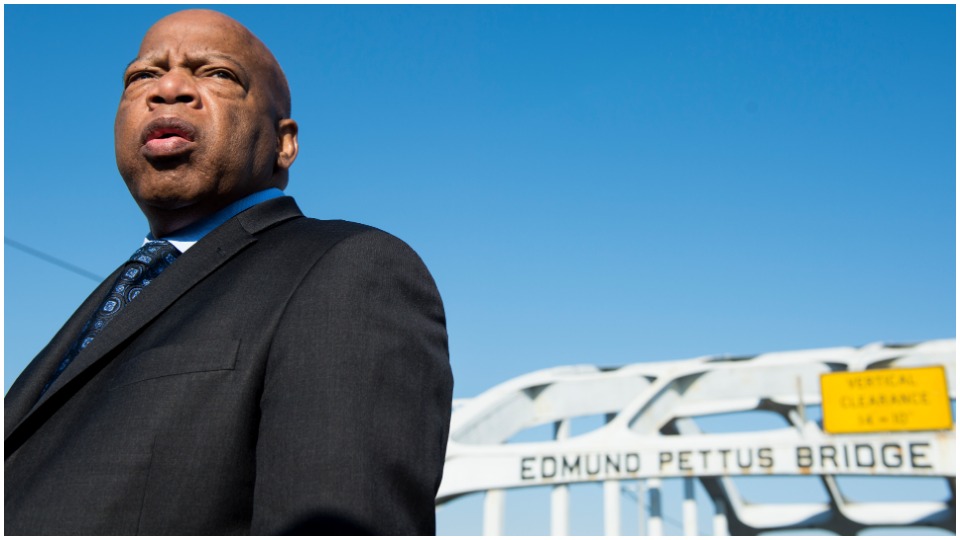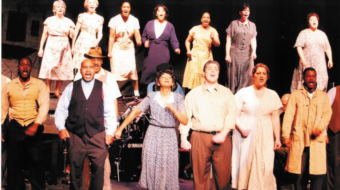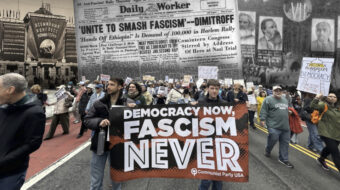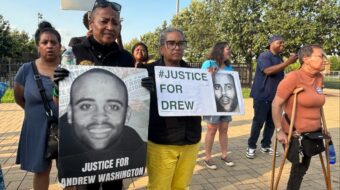
When Congressman and civil rights icon John Lewis was a kid, his parents brought him up to be religious and mindful of society’s rules. But his grandfather also told him to engage in “good trouble, necessary trouble.” Elder Lewis told his young grandson that sometimes good trouble would be needed to do what is right.
John Lewis took those words to heart. He was a studious child who carried a Bible with him every day, everywhere. Growing up on their farm in rural Alabama, young Lewis would preach to the chickens. He said they would often nod their agreement, but never said amen. That amen would come many times, many years later from a grateful nation.
Lewis has spent over 60 of his 80 years engaged in good trouble. He has been arrested 45 times (including five times while a Member of Congress) fighting for civil rights, voting rights, gun control, healthcare reform and fair immigration. “I’ll continue this fight, including the arrests,” Lewis warned, “because there are dangerous forces today that are trying to take us back to a worse era.”
As a young man, meeting the Rev. Martin Luther King, Jr., and Rosa Parks made a memorable impact. Lewis knew what he had to do. He organized sit-ins at the segregated lunch counters and other areas of Nashville, Tenn. After nonviolent training, he boarded the original Freedom Ride bus trip through the South, challenging unconstitutional old Confederate and Jim Crow-era laws that said Blacks and whites could not sit together on public transportation and Blacks could not enter “White Only” waiting rooms.
Lewis and other Black and white Freedom Riders were repeatedly assaulted, pulled from buses and beaten by angry white mobs. He was left unconscious in a pool of blood on the floor of the Greyhound Bus Station in Montgomery, Alabama, beaten on the head and face so severely that he thought he would die. The Freedom Riders were brutally assaulted again in Alabama and South Carolina. In Mississippi, he was imprisoned for 40 days in the state penitentiary for participating in a Freedom Ride which included Blacks and whites.
As head of the Student Nonviolent Coordinating Committee (SNCC), Lewis helped organize the Selma to Montgomery March for Voting Rights. The marchers were met and blocked at the Edmund Pettus Bridge by the Alabama State Police. The bridge memorialized Edmund Pettus, Grand Dragon of the Ku Klux Klan. When the peaceful marchers stopped to kneel and pray, the horse-backed state police tear gassed them and then charged into the group beating them with clubs. Lewis’s skull was fractured, and a metal plate had to be inserted. But before being taken to the hospital, he appeared on television calling on then-President Lyndon Johnson to intervene before more blood was shed.
Although John Lewis: Good Trouble deals more with these early times of troubles, it also neatly summarizes the major legislation Congressman Lewis has been involved in during the 30 years of his tenure in the House—particularly as a voice for voting rights, national health insurance and LGBTQ rights.
The film does not go into Lewis’s break with President Clinton over welfare reform and NAFTA, nor does it deal with his support for controversial U.S. international military incursions. It only summarily touches on his bitter campaign with another civil rights leader, Julian Bond, to originally win his Congressional seat.
Still, writer-director Dawn Porter has fleshed out the portrait of a warm, stubborn, engaged humanitarian, a smart, effective politician who has accomplished much and is admired by many.
She has done this by combining rich film and photo archives and voluminous tributes, accolades, anecdotes, and the stories and recollections of her subject to create a moving tribute to the courageous conscience of the Congress, an original American hero. Every viewer of this fine, 96-minute documentary film will be left with the legacy of John Lewis—to embark on, or to continue pursuing a life of “good trouble!”
(Full disclosure: The author was a member of SNCC and went South for the Civil Rights Movement, working with Black and white unemployed coal miners, where our center was burned to the ground. We were only threatened, never physically harmed, though the same folks who called through the night to share their opinions on race, religion, class and history, also at some point decided that I needed a new car—which insurance covered!)
The movie is available now at theaters and live streaming on demand. The trailer can be seen here.










